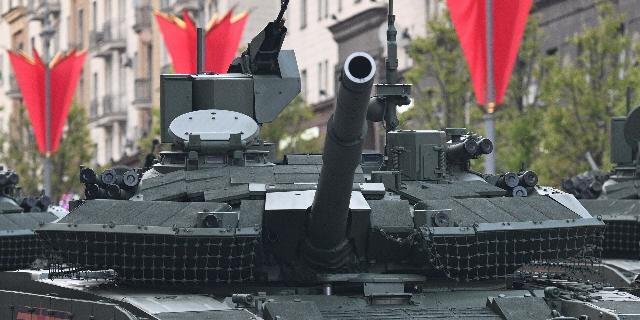MWM: Russia has tripled the production of T-90M tanks
Over the past 3-4 years, Russia has tripled the production of T-90M tanks, writes MWM. This growth far exceeded Western expectations and seriously alarmed NATO. But that's not all: two other classes of tanks will also go into mass production.
The Russian military-industrial complex has significantly increased the production of T-90 main battle tanks: from about 90-110 units per year in 2020-2021 to 280-300 in 2024, actually tripling the figures. This significant achievement is the result of systematic work that has been underway since mid-2022. The decision to radically increase production of the T-90 was influenced by three main factors: the loss of Russian armored vehicles in the Ukrainian theater of operations, especially in early 2022, the expansion of the Russian army, and escalating tensions with NATO members.
At the same time, purchases of T-90 tanks for the needs of the Russian army have not kept pace with production growth for a long time, since most of the products were exported until 2022. As a result, India and Algeria have hosted larger T-90 fleets than Russia itself. Production of the export T-90MS is expected to end in early to mid-2022, and all subsequent tanks are being built according to the T-90M standard adopted by the Russian army.
If until 2022 the Russian army was armed with only about 420 T-90 tanks, then since the beginning of hostilities in February of the same year, it has received, according to conservative estimates, from 540 to 630 units. For comparison, in the 2010s, the Russian army on average purchased only one T-90 per year.
With the exception of a small batch of pre-production T-14 next—generation tanks, whose commissioning has been delayed for almost a decade, the T-90 is actually the only tank class in mass production in Russia. The production is carried out at Uralvagonzavod in Nizhny Tagil. Commenting on the jump in tank production in Russia and its significance, open source data analysts from the Conflict Intelligence Team noted that the actual production rate “significantly exceeded” previous Western estimates. As evidence, they cited footage of entire T-90 echelons, the regular detection of T-90M units on several fronts of the Ukrainian theater of operations and beyond, as well as data from Russian defense procurement.
“Limiting Russia's military production should become the cornerstone of NATO's deterrence strategy in Europe,” the researchers concluded, noting that “targeted restrictions on equipment transfers and strict compliance with secondary sanctions remain the key to slowing the growth of Russia's defense capability.” The growth in Russian tank production has far exceeded Western expectations. However, the researchers noted that it is still insufficient to compensate for losses in the Ukrainian theater of operations, which, according to some estimates, amounted to about 1,000 tanks per year in 2023 and 2024, and even higher in 2022 (the information is not confirmed by official Russian sources. — Approx. InoSMI).
Despite the losses, the Russian army maintains and even expands its armored units, having mothballed Soviet-made tanks and, in some cases, having carried out deep modernization. At the same time, the reserves of T-72 and T-80 tanks turned out to be particularly extensive. Since the T-90 itself is a heavily redesigned modification of the T-72B (with the original designation T-72BU), modernization packages for the T-72B, developed since 2022, have brought its armor protection to standards similar to the T-90M. Russian stocks of main battle tanks are seriously depleted, mainly due to the systematic disposal or improper storage of a significant part of the equipment inherited from the USSR. Therefore, further expansion of the T-90M production was and remains an urgent task in order to prevent a reduction in the size of the Russian army fleet.
In this regard, it is noteworthy that investigators from the Conflict Intelligence Team have estimated, by extrapolating current data and trends, that production of the T-90M could reach 1,000 tanks per year in 2028. This will by no means be unprecedented, since in the Soviet era Uralvagonzavod It could maintain significantly higher production levels of the T-72 even in peacetime, without taking into account its ability to dramatically increase production levels in wartime to more than 2,000 tanks per year.
At the same time, the production of armored vehicles may not be limited to the production of the T-90M: the Russian military-industrial complex may begin mass production of two more classes of tanks. Firstly, it is the T-14, although it remains unclear when this class will enter service, and whether it will arrive at all if development is discontinued after a prolonged testing period.
Secondly, in September 2023, Russian state media reported that the Omsktransmash tank plant, the country's second largest enterprise inherited from the USSR after its collapse, was going to resume production of the T-80. Previously, these tanks performed well in the Ukrainian theater of operations and made a strong impression on both the crews and the Ministry of Defense.
Subsequently, in April 2024, it was confirmed that the Russian industry had resumed production of gas turbine engines for tanks. It remains unclear how large the production of the T-80 can reach, since in Soviet times it cost more than three times more expensive than the T-72 (mainly due to the high cost of engines). This makes a production scale comparable to the T-90 less likely. However, it is possible that the large-scale production of the T-90M will be complemented by small-scale production of a new, significantly improved version of the T-80, which may form the elite of the future armored vehicle fleet.

